Despite its political instability, Romania is a heaven for tourists. It’s where the river Danube’s delta lies. Where the sea whispers its best-kept secrets to the shores. And where the mountains offer one of the most beautiful scenic views. From alpine landscapes to long valleys carved in stone, Romania’s mountains are full of idyllic places and natural wonders.
In these mountains are hidden some of the most spectacular virgin forests in Europe. Over 12% of Romania’s forests would have been virgin if it weren’t for the illegal logging and the corruption happening inside the state’s borders. Sadly, this relatively high percentage has dropped to a mere 2% in the present days. And it keeps dropping because no less than 10,000 square meters of these virgin woodlands simply vanish every hour. If you’ll do the math, you’ll see that one tree is being cut every 1.2 seconds.
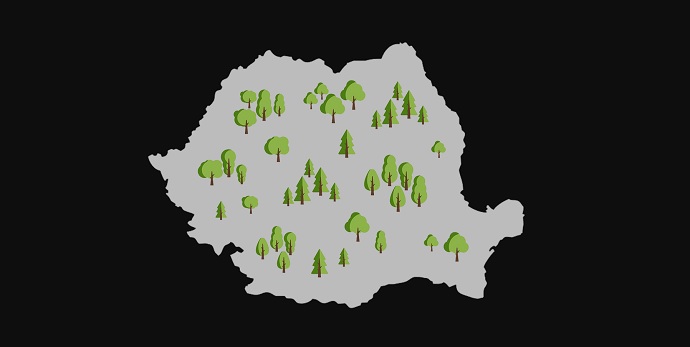
Virgin Radio Romania wanted to do whatever it took to stop these illegal actions. So, it found a good ‘partner in crime’, WWF Romania, and together they embarked on a journey during which they wanted to save Romania’s virgin forests. Although the road was and still is long and bumpy, while they were planning a strategy to give a hand to the country’s nature, another trusted friend decided to hop on and keep them company: McCann Worldgroup Romania, a Bucharest-based creative agency that prides itself in building famous brands for its clients.
You’ll see that the agency brought value not only to its clients but to nature too. How? By transforming the alarming statistics into an actual beat that played on radio stations in 2018, being included within songs of some of Romania’s most notorious singers. Once every 1.2 seconds you’d hear the Deforestation Beat, a not-so-natural musical tone that complemented the hits of Romanian artists such as INNA, The Motans, Mihal, Vanotek, or Grimus feat Dj Silver. These were the artists who responded first to Virgin Radio’s call.
The brand invited other celebrities to get involved in the initiative and include the beat in their hits. But it wasn’t just popular artists who could get involved in the challenge. The public could also do it by downloading the beat sample. “This campaign translates a huge problem into the language of the young generation and simplifies the way they can get involved to save nature. Radios and podcasts are part of their everyday life, so that’s where we went to educate and ask for their help. One beat, one song, one click away,” stated Orieta Hulea, Director of WWF Romania.
“We are losing our forests. That’s a hard fact, backed by numbers. But numbers and statistics no longer impress us. So we transformed the numbers into entertainment and warnings,” explained Catalin Dobre, CCO McCann Worldgroup Romania in a press release.
The campaign asked the audience to get involved and donate to help WWF identify new land surfaces of virgin forests, which also led to adding a tree on Virgin Radio’s map, therefore virtually contributing to making the country healthy again. A great initiative to raise awareness and stop deforestation in a creative manner! We’re hoping to see more campaigns like this.
*Originally featured on our site, Branding.news, where you can always find impressive marketing campaigns from around the world.
“No man ever steps in the same river twice, for it’s not the same river and he’s not the same man.”
The observation above was made by Greek philosopher Heraclitus, who lived around two and a half thousand years ago — long before anybody cared too much about how to manage their brand. But what’s true of men and rivers is also true of brands and their environment: the context in which your brand exists is always changing and brands inevitably evolve with time. Acolytes of Byron Sharp would do well to acknowledge the truth in Heraclitus’ statement: Sharp’s belief is that brands grow by constantly using the same brand elements — color, logo, font, strapline, jingle — and through repetition establish these as “distinctive memory structures” that embed a brand in people’s minds.
But this is precisely how brands DON’T grow.
Coca-Cola would be screwed if its growth strategy was limited to flogging red cans of carbonated brown sugary liquid. In May 2018, UK value sales of Diet Coke outstripped Coca-Cola as sugar taxes and changing consumer tastes impacted sales of their core product. The river changed. But so did the man. The relative success of Diet Coke was also a consequence of The Coca-Cola Company’s decision to invest in low-sugar brands to appeal to a new generation. This involved a pack redesign, a shiny new £10m advertising campaign, the introduction of new flavor variants, and an evolution of Diet Coke’s identity. There’s nothing remarkable in this story — you don’t need to be able to see around corners to anticipate that the war on sugar is bound to affect sugary-soft-drinks brands. The very least a responsible brand owner should do is learn to change with the times.
Great brands go a step further: The man changes before the river.
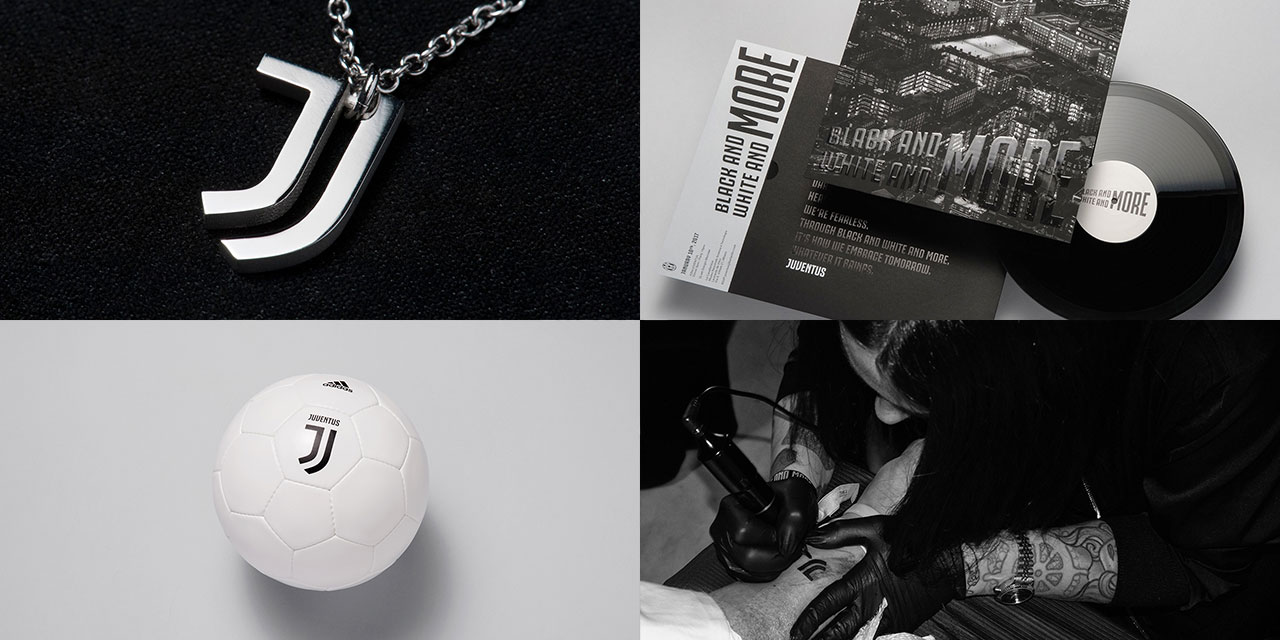
Source: Interbrand
On Monday, January 16th, 2017, Juventus unveiled a new club badge and brand identity at Milan’s Science and Technology Museum. To say their identity represents a break from the past would be an understatement.
Founded in 1897, the club had become commonly known as the “Old Lady” of Italian football (an ironic epithet — “Juventus” is Latin for “youth”). Its previous badge reflected the brand’s status as one of the oldest and most revered clubs in world football. The redesigned brand represents a radical break from the past — it symbolizes the club’s new ethos of ‘The Future, Now’. It doesn’t look like a football club is supposed to look. The design is singularly bold and minimal. Some love it. Many hate it. At the launch, Juventus President Andrea Agnelli was unapologetic in his view:
“Change before you have to.”
The new brand isn’t just radical. It’s also unbelievably clever. Designed to transcend football, it is helping the club extend into hotels, education, entertainment, and even energy. It anticipates the type of organization Juventus aspires to be and communicates the boldness of its vision. Despite the constant babble about “bravery” and “disruption”, few organizations are confident enough to project such a clear vision of their own future.
Critics of Juventus’ rebrand complain that the new mark is “soulless” and “tragic” and a betrayal of the club’s history and values. The sense is of a brand that has sacrificed authenticity in exchange for ambition. This is a challenge most brands face sooner or later: How do you grow without losing your soul?
How do you balance authenticity and ambition?
I’d suggest this depends on your concept of authenticity.
It’s easy to assume that authenticity is a matter of continuity with the past: Knowing where you come from and being true to who you are. According to this view, at the heart of any person or brand, there is an enduring and eternal core or ‘essence’. This fixed sense of self is apparent in the language we use to describe how brands articulate their positioning: We talk of ‘Brand DNA’ and ‘Brand Essence’. This fixed sense of self also underlies Byron Sharp’s worldview: Identify the core elements that people most closely associate with your brand and repeatedly bang everyone over the head with them ad nauseam.
Not everybody sees authenticity in this way.
Instead, Professor Hermina Ibarra is a proponent of the idea that the ‘self’ is not fixed but permanently evolving with each new experience. People and brands who cling to an unflinching and unchanging sense of themselves are bound to reinforce existing ways of thinking and working. They will never try on new ideas. They will never thrive in unfamiliar cultures or stretch into new fields of endeavor. Seen this way, the mark of true leadership is a willingness to learn and grow, which requires a flexible sense of self: the ability to go beyond what’s comfortable or familiar and allow your values and beliefs to evolve as a result. This is what Hermina Ibarra calls “adaptive authenticity”: A constant process of challenge, experimentation, and enlightenment.
The past is something you learn from, but not something your brand needs to be wedded to. For evidence of this, look no further than the brands of the most valuable businesses in the world. Amazon’s original brand featured a river. Apple’s was based on an illustration of Isaac Newton sitting under an apple tree. Google started life as BackRub. Even the oldest and most revered brands in the world — Louis Vuitton, Mercedes-Benz, GE — are unrecognizable from their original incarnations.
So if you’re contemplating your own brand’s future, don’t obsess over whether you’re being true to your brand’s roots. Continuity with the past matters far less than clarity of vision and boldness of ambition. In Andrea Agnelli’s words: “Change before you have to.”
Image source: Jossuha Théophile
*Originally featured on our site, Brandingmag.com, where you can always find the best insights on how to grow your brand and business.
When René Lacoste embraced the crocodile emblem 85 years ago, he didn’t think that the reptile would one day disappear completely. So, in 2009, the brand that wears his name developed a program through which it aims to protect as much as it can of the ecosystem in which these fearless animals live. Almost 10 years after the launch of this project, Lacoste felt that there’s more it can do for nature and, therefore, expanded its ecosystem protection project. While doing something almost unimaginable.
For the first time in Lacoste’s history, the French clothing brand decided to leave its famous crocodile logo aside and make room for silhouettes of other beautiful animals which, sadly, are threatened with extinction. The change does not come as part of a rebranding project that spins around Lacoste itself but rather shows the company’s will to help International Union for Conservation of Nature (IUCN) fight the extinction crisis.
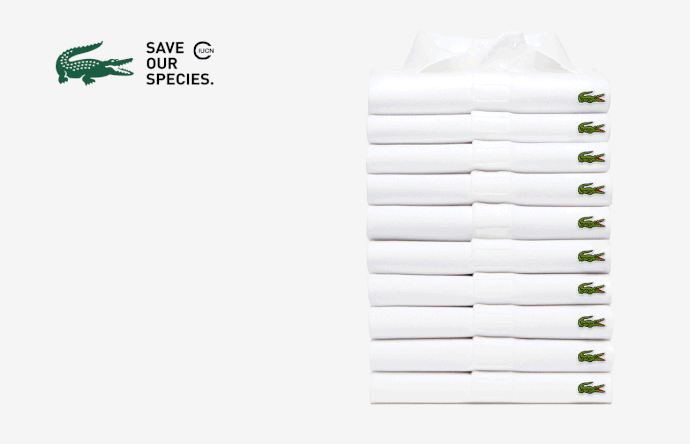
As a part of the NGO’s “Save Our Species” campaign, the fashion giant launched a new collection of its world-famous polo shirts adorned with silhouettes of ten different endangered species. The limited-edition clothing line was officially launched at Paris Fashion Week 2018 and, according to Lacoste, the polo shirts were a hit.
In partnership with BETC agency and with the help of the organization, Lacoste identified ten species that might soon become extinct, unless immediate action is taken. Inspired by the aesthetic lines and embroidery characteristic of the iconic crocodile, the fashion brand’s studio designed a set of new logos.
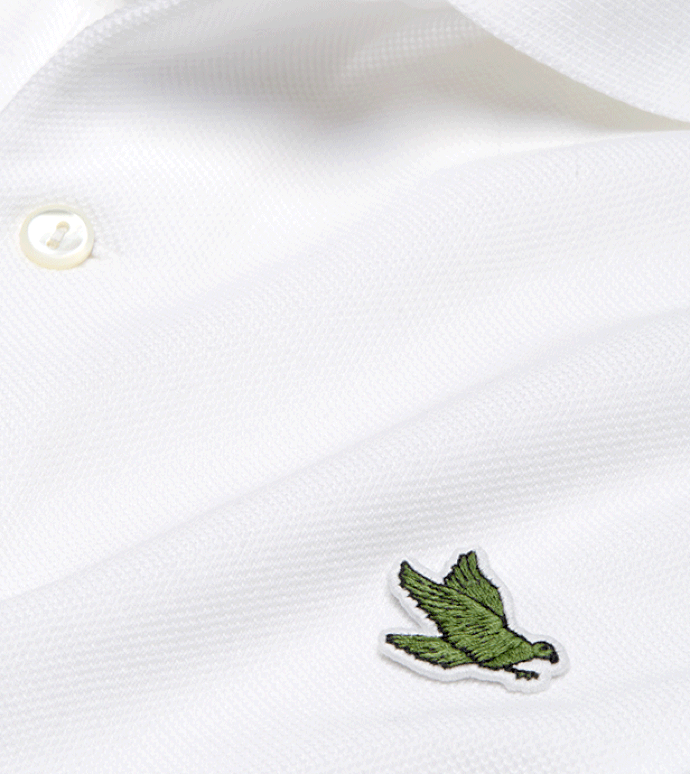
Only 1,775 polo shirts were made. Yes, you’ve guessed right, the number was not randomly picked. Each model was produced to correspond with the remaining population sizes in the wild.
Based on the brand’s calculations, the world currently hosts 450 Anegada ground iguanas, 350 Sumatran tigers, 250 Saolas, 231 California condors, 157 nocturnal parrots known as the Kakapo, 150 Cao-vit gibbons, 67 Javan rhinos, 50 Northern sportive lemurs, 40 Burmese roofed turtles, and only 30 Vaquita specimens left in the wild. The price of each shirt was set to €150 and all proceeds went to IUCN which will use the money for wildlife conservation worldwide.
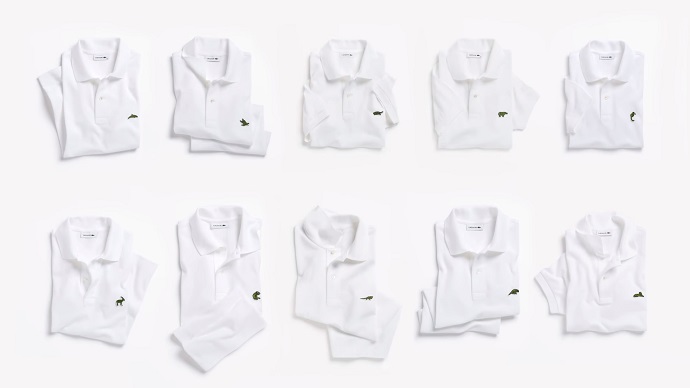
In case you weren’t fast enough to get your hands on one of Lacoste’s limited-edition polos but still want to join the cause, you can do so by stirring up conversations on social media using the #LacosteSaveOurSpecies hashtag. If you feel like the initiative deserves more than a simple share, feel free to donate as much as you can and help save the cute, endangered animals.
Even though Lacoste is committed to protecting the planet, it isn’t clear if the brand is dedicated 100% to sustainability. According to Rank a Brand, the largest sustainable brand-comparison website in Europe, Lacoste received the lowest sustainability score possible, the E-label, in 2017.
The result was calculated based on this sustainability report. The company didn’t pass the test and earned the “don’t buy” status “by communicating nothing concrete about the policies for environment, carbon emissions or labor conditions in low-wages countries.”
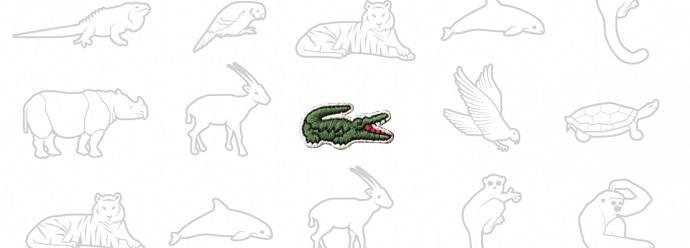
Some may consider that the brand isn’t the best when it comes to sustainability. But with the “Save Our Species” initiative, Lacoste proves that at least it is trying to do its best to save nature and its endangered species.
Given that the collection has sold out in just a few days after the launch, one can conclude that Lacoste’s contribution to help fight the extinction crisis was done the right way. And then we can only hope it will do more to reach higher ranks on the sustainability side.
https://www.youtube.com/watch?v=iLbW68bDV4g
*Originally featured on our site, Branding.news, where you can always find impressive marketing campaigns from around the world.





